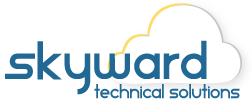Advantages of Content Delivery Networks (CDNs)
The performance of your website can significantly impact your business. This is where Content Delivery Networks (CDNs) come into play. CDNs are a crucial component in ensuring a fast, secure, and reliable online experience for your users. What is a CDN? Content Delivery Networks are networks of servers distributed across various locations around the globe. Its primary function is to deliver content to users more quickly and efficiently, based on their geographic location. When a user requests content from a website, [...]











